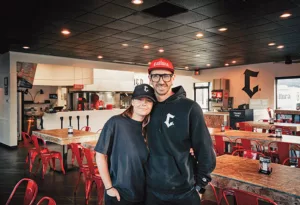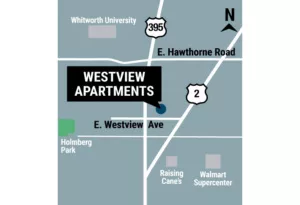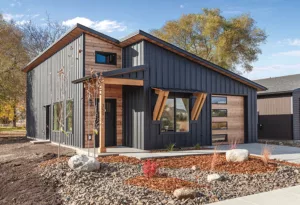
Meet & Greet with regional labor economist Mike McBride

Mike McBride recently was named regional labor economist for the Washington state Employment Security Department's northeast and north central regions.
In his new role, McBride will be analyzing job and employment data for roughly a quarter of the counties in the state, a seemingly natural career evolution for the Spokane native who previously served as business and industry analyst for the Spokane Workforce Council.
The Journal recently sat down with McBride to talk about his career, his territory, and the job market in Eastern Washington.
Tell us about your new role.
It's quite a nebulous role actually. There are so many different aspects to it, and there's no real definition as to what exactly you do, because it changes all the time. It depends on what projects you're doing or what customers you're working with. In all reality, how I see it is, I help analyze and solve problems for ESD data users.
The idea is to follow what's happening, understand, interpret, and then work with problems that various customers have. Education, workforce development, businesses, municipal governments, and just the community in general really interact with the data at different levels.
So, it's making sure that what's being reported out is accurate and doing research on their behalf or in conjunction with them to make sure that what they're seeing holds truth. Then, they can make decisions that are based in some grounded data set.
Let's talk a little about your territory. First of all, it's a large geographic territory. Also, it's diverse from an industry standpoint.
There are officially five separate regional labor economists that cover all of Washington state. My territory is 11 counties, starting at Okanogan and Chelan counties in north central Washington, moving east to Pend Oreille County, then down through Spokane to Whitman County. It's a very large geography, as you had mentioned, with vastly different economies going from an agriculture base to the metro area of Spokane, which is much more complex, to down to WSU, a research university that drives an entire economy in a county.
The differences are vast in understanding how the data changes month to month and how it can be vastly different between those counties is important.
The challenge is staying on top of different things and serving the different communities as best I can in a large region. Being based here in Spokane, it's easier to serve Spokane, so I don't want to become heavily biased in that regard. I'm making sure that I'm paying attention and giving great customer service to the different folks across the whole region.
I did come from workforce development previously, so I've been on top of the labor market situation pretty strongly for a decade.
What's your take on the present job market?
Job growth is slowing. Spokane is following national trends in this regard. The growth that's occurring is heavily concentrated into service providing sectors, whereas goods producing sectors—construction, manufacturing—has really flatlined.
Obviously, you can't have a meteoric growth rate forever. Things ebb and flow, but that's what we've been seeing in terms of recent trends.
Within the labor force, you just have the demographics that you can't affect. The baby boomer generation is leaving the workforce in droves. They have been for years. Being able to replace those workers, oftentimes in key positions at the management level with tons of experiences, is incredibly difficult. Bringing people in with the right skill sets is a challenge. That's a persistent issue that lots of businesses are facing.
The retirement issue is real and it's showing up in the data.
When you talk about growth in service-sector jobs, does that include health care jobs?
Yes, health care is the largest industry in Spokane by a lot, and it continues to grow at a fairly good clip, adding thousands of jobs every year in Spokane. It's awesome to have a whole cluster of both education and industry all working together.
You have the University District with the medical schools, nursing, and related fields. You kind of have a bubbling effect that people want to locate here, and health care industry wants to be near the growth of the workers through the education system. That's a really healthy industry.
But obviously, there was high turnover that we saw during COVID. It became incredibly difficult for a lot of people to work in that environment. And so there, there's challenges you have to account for, but that is truly the largest industry in Spokane, and it drives a lot of what's going on here.
Are there any other industries within that broader area of service providers where you're seeing growth right now?
Yeah, there's growth in professional services, which includes professional scientific, and research and development. It's a humongous category. There are elements of that still growing.
Locally, we've seen leisure and hospitality and retail do really well in the last year. Spokane is becoming kind of a destination for events, sports-related events and conferences. All sorts of things that are great for a community, because you have people who don't live here bringing their money and leaving it here. That's awesome for a community and midsized city.
You mentioned declines on the goods-producing side. What are you seeing there?
Well, when we're looking at year-over-year numbers, manufacturing specifically had macro-level issues that affected it. The Boeing situation with the workers strike and then the trade issues all roll into the hiring. We're a supplier to so much of the aerospace industry; it's a significant chunk of the manufacturing locally.
So what happens elsewhere has downstream effects, and that was seen and that honestly will take quite a lot of time to get ramped back up. When Boeing gets their plane production running again, it takes a full year to have the supply chain get back to churning.
But we also saw construction start off a bit slower this year. There have been some state funding issues, as you might be aware of, with the state budget and how that flows into large-scale infrastructure and construction projects. That's being watched as we go forward.
This interview has been edited for length and clarity.




